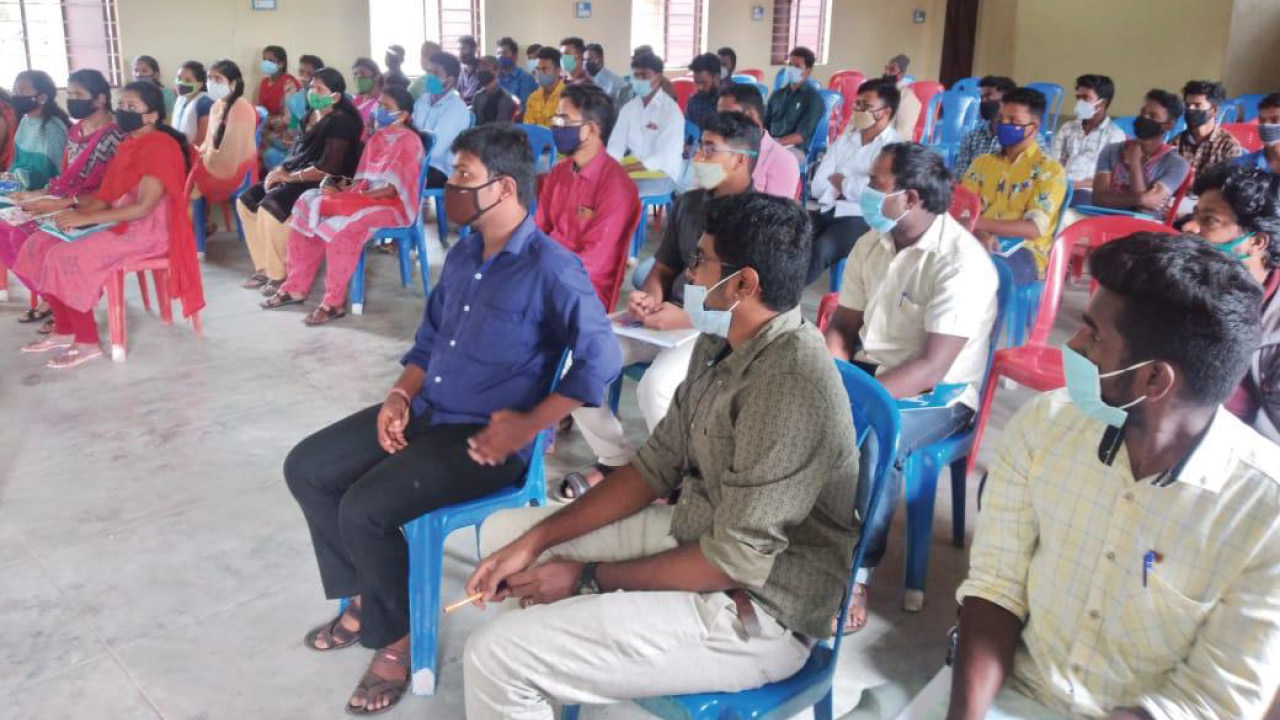Tribal Employment Outreach Centre (ToRCH) – District Employment and Career Guidance Centre, Erode

Under ToRCH, 3 centers have already been setup covering 20 revenue villages. 100 youth have been trained for capacity building
Problem
- More than 80% of tribals reside in remote forest areas of Talavadi, Kadambur hills in Sathyamangalam and Bargur hills in Anthiyur
- Largely living below poverty line, they have poor access to employment opportunities
- Unaffordable cost of coaching and capacity building
- High cost of transportation to reach city areas to prepare for competitive examinations
- Poor capacity building or skilling infrastructure
- ST literacy rate is 44.69% as against District average of 72.6%
Solution
- ToRCH is established to ensure last mile delivery
- A coaching centre has been set up in the tribal area of Thalavadi and Kadambur
- Envisages to prepare students for competitive exams
- Available to rural tribal youth free of cost
- Engagement with the tribal communities
- Arranging necessary tools, equipment, books, faculty, computers and printers
- Mobilisation of candidates via press, pamphlets and social media
Outcomes
- Set up 3 centres, covers 20 revenue villages located in Thalavadi, Kadambur and Burgur
- Already covered 100 youth
- Improved accessibility for youth in hill areas for employment and skill development
- Under ToRCH, youth can participate in free coaching near their village
- Eliminated the need to incur travel expenses
- Capacity building and professional training for the youth
- Scaling to set up more centres to cover entire hill and tribal youth
Project Details
Category: Employment
Project: Tribal Employment Outreach Centre (ToRCH)
Organisation: District Employment and Career Guidance Centre, Erode
Start Date: 24-Jul-2021
Problem
As per Census 2011, there are 21,880 tribals in Erode, which constitute one percent of the total population of the district. They are largely inhabitants of the forest area that comprises of Sathyamangalam Tiger Reserve as well other reserves that cover about 40 per cent of the total Erode district area, i.e., 2.27 hectares. These include Talavadi, Kadambur and Bargur hills. These areas have faced socio-economic backwardness for years. Talavadi has been worst performing block in human development, multi-dimensional poverty (health, education and standard of living, child development and has highest dropout rate in primary schools. In Talavadi, the percentage of marginal workers is 10.79% and 10.56% in Sathyamangalam as against district average of 5.05%. The percentage of non-workers is 46.35% in Talavadi as against district average of 41.93% and of agricultural labourers is 54.18% as against District average of 42.78%.
The terrain is mostly hilly with difficulty and restrictions in access, mostly in terms of transportation and telecommunication. The tribal population is widely dispersed across this geography that has 12,352 unemployed youth.
Solution
In order to mobilise the youth and motivate them, extensive use of media and social media was made. News was released in the local media and pamphlets were distributed. Extensive use of social media including WhatsApp and Facebook was made to increase awareness about the programme.
Focus group discussion were organised with the tribal unemployed youth involving the local bodies and tribal communities. A library is set up consisting of 500 books, library furniture and stacks, which was inaugurated by the District Collector.
Proper classroom facility has been created and the training sessions are conducted by domain experts. Motivational talks are delivered by senior government officers.
Outcomes
Three centres are already operation and are training over a hundred students. It is a first of its kind initiative done in the district and the state. It is a convergence initiative with other departments and programmes like Rural Development Department, Women Self Help Groups, Illam Thedi Kalvi programme to motivate the youth to attend coaching classes.
The youth is encouraged to come to the coaching centre and are preparing for several competitive exams. It is fully funded by the district administration and is available to all participants free of cost. It is a hybrid model of both offline and online learning. The curriculum is developed keeping in mind the local needs of the youth in both Tamil and Kannada. The project has come to be owned by the local communities, elected bodies and the NGOs.
The government is now scaling up the number of centres to cover all tribal and hill population primarily Palayam, Satyamangalam and Bargur. The plan now is to include personality development curriculum to help develop soft skills to improve placement prospects.
Under the ‘Nua Arunima’ program, AWWs and Children’s comprehension and participation increased to acquire Nua Arunima Curricular activities with better understanding. The project enabled children, parents, and the community to have access to health, nutrition, immunisation, and also pre-school education in their home language. The project ensured children’s education continuity even after the pre-school education and improved their school readiness. It Strengthened the skills and capacity of government policymakers, managers, and frontline workers to deliver high-quality mother tongue-based early learning programs; and enabled the use of Anganwadis as platforms for parental and community engagement focused on the holistic development of children.




